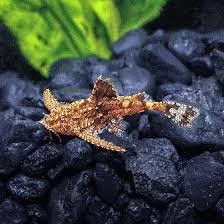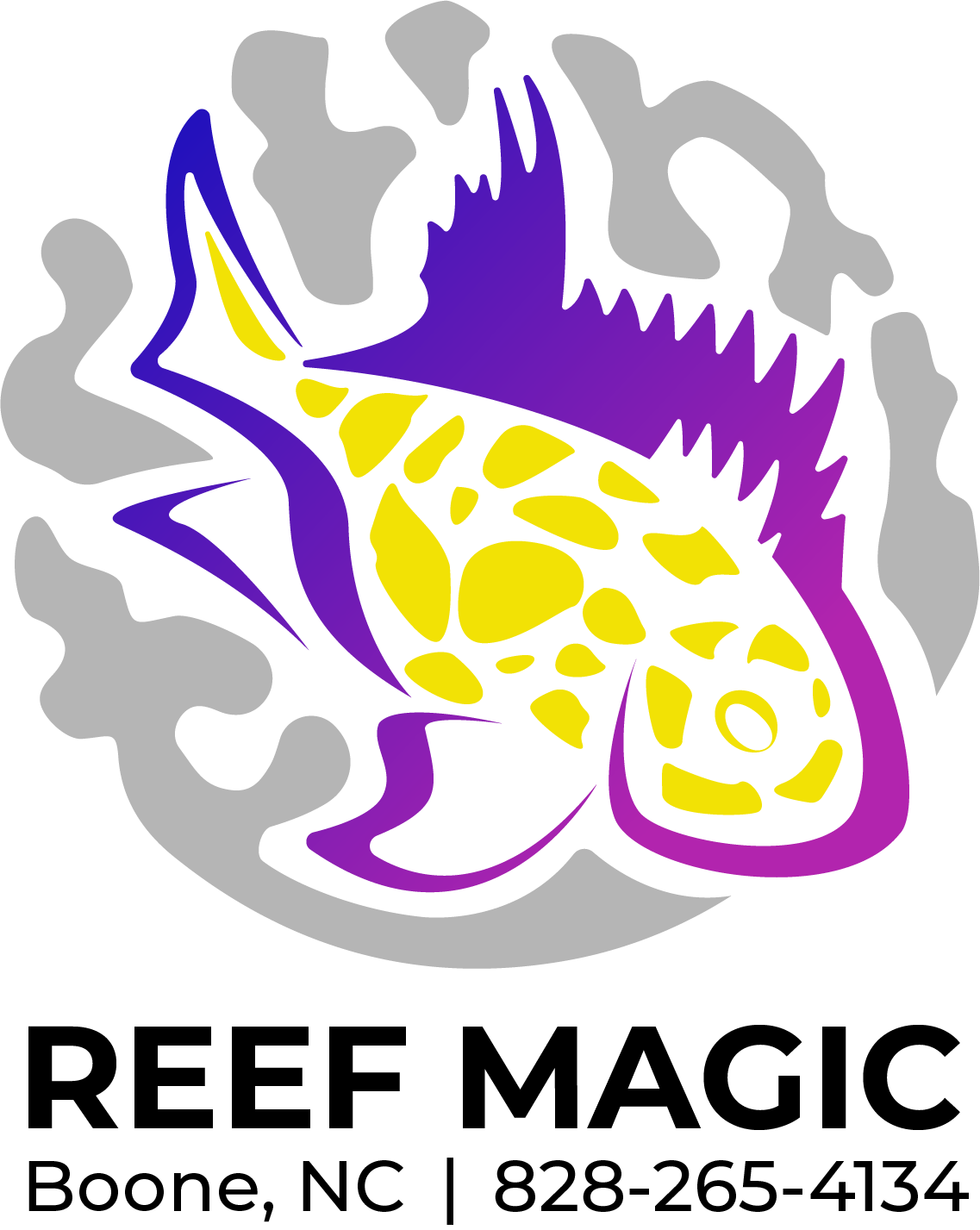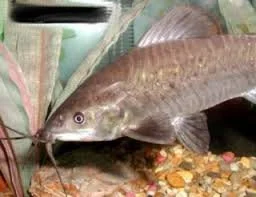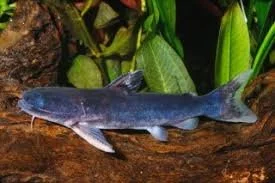 Image 1 of 1
Image 1 of 1


Catfish- Indian Anchor
The Indian anchor catfish, also known as the Dwarf Anchor Catfish or Hara jerdoni, is a small, peaceful freshwater fish that grows to about 1.2-1.5 inches. It is native to the rivers and streams of India and Bangladesh and is easily identified by its flattened body, broad pectoral fins that resemble anchors, and mottled brown and gray coloration for camouflage. This bottom-dweller prefers slow-moving water with a soft, sandy substrate and is most active at night.
Physical description
Size: Small, typically growing to a maximum of 1.2 to 1.5 inches.
Shape: Flattened body with a broad head and mouth.
Fins: Features elongated, pointed pectoral fins that resemble anchors, giving the fish its name.
Coloration: Mottled brown and gray, which helps it blend in with rocks and debris.
Adaptability: Can change its color slightly from dark brown to tan to match its surroundings.
Habitat and behavior
Native habitat: Slow-moving freshwater streams and rivers in India and Bangladesh.
Natural environment: Found in areas with sandy substrates, leaf litter, and driftwood.
Temperament: Peaceful and shy, preferring to hide during the day.
Activity: Nocturnal, meaning it is most active at night.
Aquarium care
Tank size: Can be housed in small "nano" aquariums, as small as 10 gallons for a small group, or even 3 gallons, as they are not active swimmers, Quinn's Fins.
Substrate: A soft substrate like sand or fine gravel is ideal.
Decor: Provide plenty of hiding spots with rocks, driftwood, and plants.
Water: Prefers gentle water flow and clean water, with temperatures between 64-75°F.
Compatibility: Peaceful and can be kept with other peaceful nano fish and small invertebrates. Avoid housing with active, aggressive bottom-feeders that could outcompete them for food.
The Indian anchor catfish, also known as the Dwarf Anchor Catfish or Hara jerdoni, is a small, peaceful freshwater fish that grows to about 1.2-1.5 inches. It is native to the rivers and streams of India and Bangladesh and is easily identified by its flattened body, broad pectoral fins that resemble anchors, and mottled brown and gray coloration for camouflage. This bottom-dweller prefers slow-moving water with a soft, sandy substrate and is most active at night.
Physical description
Size: Small, typically growing to a maximum of 1.2 to 1.5 inches.
Shape: Flattened body with a broad head and mouth.
Fins: Features elongated, pointed pectoral fins that resemble anchors, giving the fish its name.
Coloration: Mottled brown and gray, which helps it blend in with rocks and debris.
Adaptability: Can change its color slightly from dark brown to tan to match its surroundings.
Habitat and behavior
Native habitat: Slow-moving freshwater streams and rivers in India and Bangladesh.
Natural environment: Found in areas with sandy substrates, leaf litter, and driftwood.
Temperament: Peaceful and shy, preferring to hide during the day.
Activity: Nocturnal, meaning it is most active at night.
Aquarium care
Tank size: Can be housed in small "nano" aquariums, as small as 10 gallons for a small group, or even 3 gallons, as they are not active swimmers, Quinn's Fins.
Substrate: A soft substrate like sand or fine gravel is ideal.
Decor: Provide plenty of hiding spots with rocks, driftwood, and plants.
Water: Prefers gentle water flow and clean water, with temperatures between 64-75°F.
Compatibility: Peaceful and can be kept with other peaceful nano fish and small invertebrates. Avoid housing with active, aggressive bottom-feeders that could outcompete them for food.






